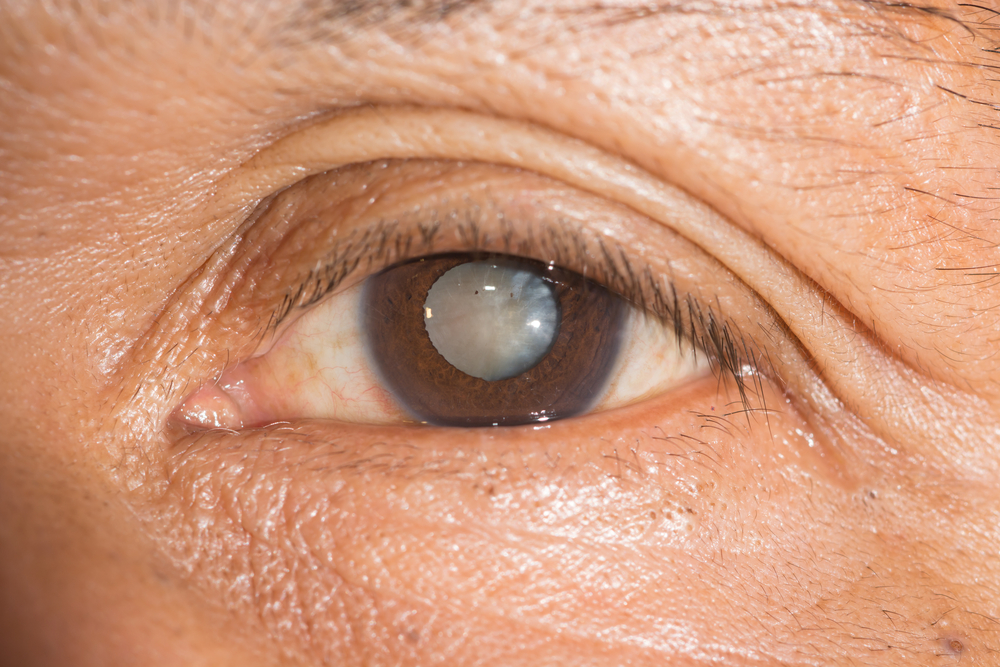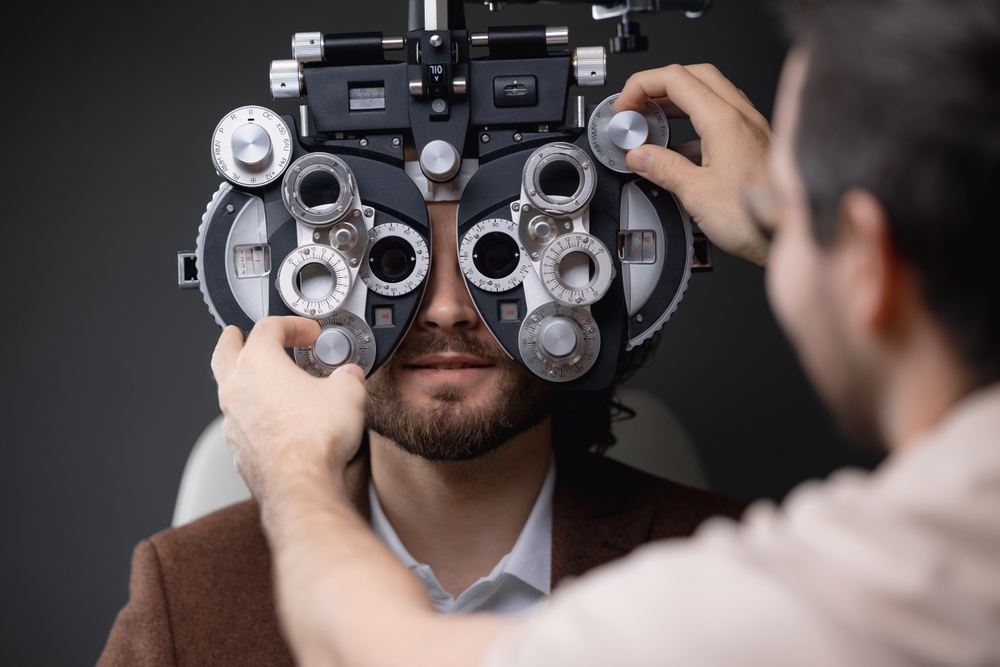7 Early Signs You Might Have Cataracts
Posted by: Pepose Vision Institute in Cataracts on June 23, 2025

Your vision is your window to the world, and subtle changes in how you see can significantly impact your daily life. If you’ve noticed that reading seems more challenging, night driving feels uncomfortable, or colors don’t appear as vibrant as they once did, you might be experiencing the early signs of cataracts.
Cataracts affect millions of people worldwide, particularly those over 60. Recognizing the symptoms early can lead to better outcomes and a smoother journey toward clearer vision. Keep reading to learn seven early signs that you might be developing cataracts!
What Are Cataracts?

Inside your eye, there is a natural lens that focuses light to create clear images. When this lens becomes cloudy due to protein breakdown, a cataract forms. This cloudiness isn’t a growth or film over your eye. It’s a change in the lens structure that gradually impairs the quality of your vision.
While cataracts most commonly develop as part of the natural aging process, they can also develop earlier in life due to eye trauma, chronic eye disease, diabetes, or certain medications. The development timeline varies significantly, with some cataracts progressing over months while others take years to affect vision noticeably.
The Seven Warning Signs Your Vision May Be Changing
While cataracts develop gradually, there are specific symptoms that tell you it’s time to get your eyes checked. Here are the seven most common early indicators that cataracts may be developing.
1. Increased Difficulty with Night Vision
One of the earliest and most common signs of cataracts is struggling with night vision. You might notice that driving after dark becomes increasingly uncomfortable.
This happens because cataracts scatter light entering your eye, making it harder to see clearly in low-light conditions. The cloudiness in your lens creates halos around lights and makes it difficult to distinguish between objects and their shadows.
Many people first notice this change when streetlights seem to have starbursts around them or when oncoming headlights create uncomfortable glare.
2. Increased Sensitivity to Light and Glare
Cataracts can make your eyes significantly more sensitive to bright lights. You might find yourself squinting more often in sunlight, feeling uncomfortable in brightly lit stores, or needing to wear sunglasses more frequently than before.
This light sensitivity, known as photophobia, occurs because the cloudy lens scatters light in multiple directions rather than focusing it properly. Indoor lighting that never bothered you before might suddenly seem too harsh, and you may find yourself preferring dimmer environments.
This symptom often develops alongside night vision problems, creating a frustrating cycle where both bright and dim lighting become problematic.
3. Colors Appear Faded or Yellowed
When cataracts begin to affect your vision, colors may lose their vibrancy and appear washed out or yellowed. This happens because the cloudy lens filters light differently, preventing the full spectrum of colors from reaching your retina clearly.
You might notice that your favorite artwork looks different, or that distinguishing between similar colors becomes more challenging. Some people describe this change as looking at the world through a yellow or brown filter, which gradually becomes more noticeable as the cataract progresses.

4. Frequent Changes in Glasses or Contact Lens Prescriptions
If you find yourself needing prescription updates more frequently than usual, cataracts could be the reason. As the lens becomes cloudier and changes shape, your vision requirements shift accordingly.
What once was a stable prescription may suddenly require frequent adjustments as your eye attempts to compensate for the developing cataract. This symptom is particularly noticeable in people who have had relatively stable vision for years.
The need for stronger prescriptions or different lens types can signal that cataracts are beginning to impact your vision significantly.
5. Double Vision in One Eye
Cataracts can cause double vision, particularly in one eye, as the irregular clouding of the lens splits light rays into multiple images. This differs from double vision caused by muscle problems, which typically affects both eyes together.
Single-eye double vision from cataracts often appears as ghosting or shadowing around objects. This symptom can be particularly disorienting and may worsen under certain lighting conditions.
The double images might be subtle at first but can become more pronounced as the cataract develops, making reading and detailed work increasingly difficult.
6. Seeing Halos Around Lights
The appearance of halos or rings around light sources is a classic early sign of cataracts. These halos result from light scattering as it passes through the cloudy lens, creating circular patterns around bright objects like car headlights.
Halos are particularly noticeable at night and can significantly impact your comfort and safety in various lighting situations. The size and intensity of these halos typically increase as cataracts progress.
7. Blurry or Hazy Vision That Worsens Over Time
Often the most recognizable sign of cataracts is gradually worsening blurry or hazy vision that doesn’t improve with blinking or rubbing your eyes. This cloudiness affects both distance and near vision, though it may impact one more than the other initially.
Unlike temporary vision changes from dry eyes or fatigue, cataract-related blurriness is persistent and progressive. You might find that tasks like reading fine print or threading a needle become increasingly challenging despite having bright lighting.
When to See Your Eye Doctor

Experiencing one or more of these symptoms doesn’t automatically mean you have cataracts, but it does indicate the need for professional evaluation. Early detection allows for better treatment planning and can help prevent unnecessary vision loss or safety risks.
At Pepose Vision Institute, comprehensive eye examinations can accurately diagnose cataracts and determine their stage of development. Advanced diagnostic technology allows our specialists to assess not just the presence of cataracts but also their impact on your overall visual function and quality of life.
The key is not to wait until symptoms severely impact your daily activities. Modern cataract surgery is highly successful, with most patients experiencing significant vision improvement and enhanced quality of life.
Modern Solutions for Clearer Vision
Today’s cataract treatment options extend far beyond simply removing the cloudy lens.
Advanced surgical techniques, including laser-assisted femtosecond cataract surgery, offer unprecedented precision and customization. Premium intraocular lenses can address not just cataracts but also astigmatism and presbyopia, potentially reducing or eliminating dependence on glasses.
At Pepose Vision Institute, patients benefit from state-of-the-art technology, including advanced IOL options, the LENSAR Laser System with Augmented Reality technology, and the CATALYS Laser System. These advanced tools enable cataract surgeons to create precise incisions without the use of a blade and tailor treatment to each individual eye.
Don’t let early cataract symptoms gradually diminish your quality of life. Schedule a cataract evaluation at Pepose Vision Institute in St. Louis or Chesterfield, MO, today and take the first step toward a future of clearer, more vibrant vision.


